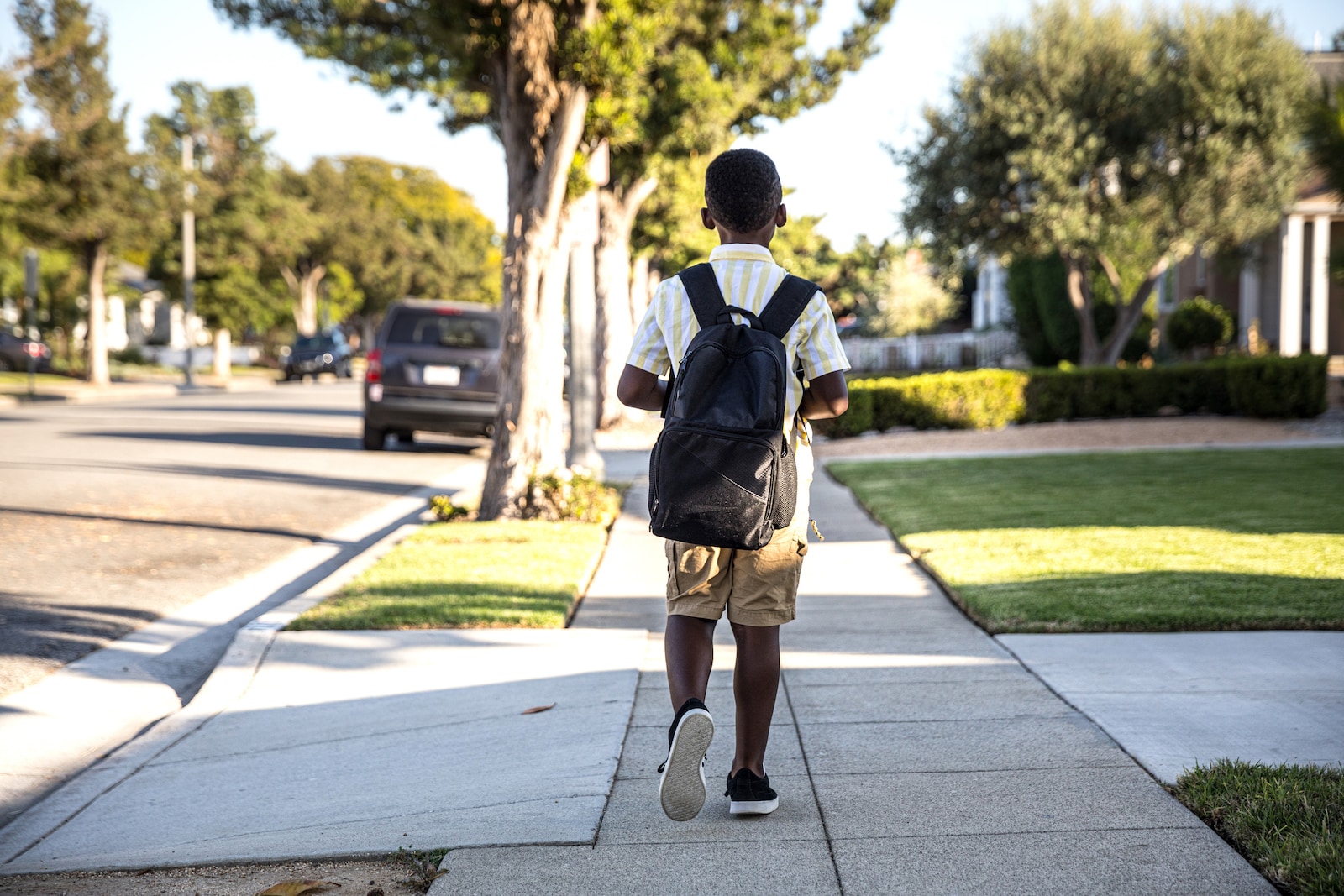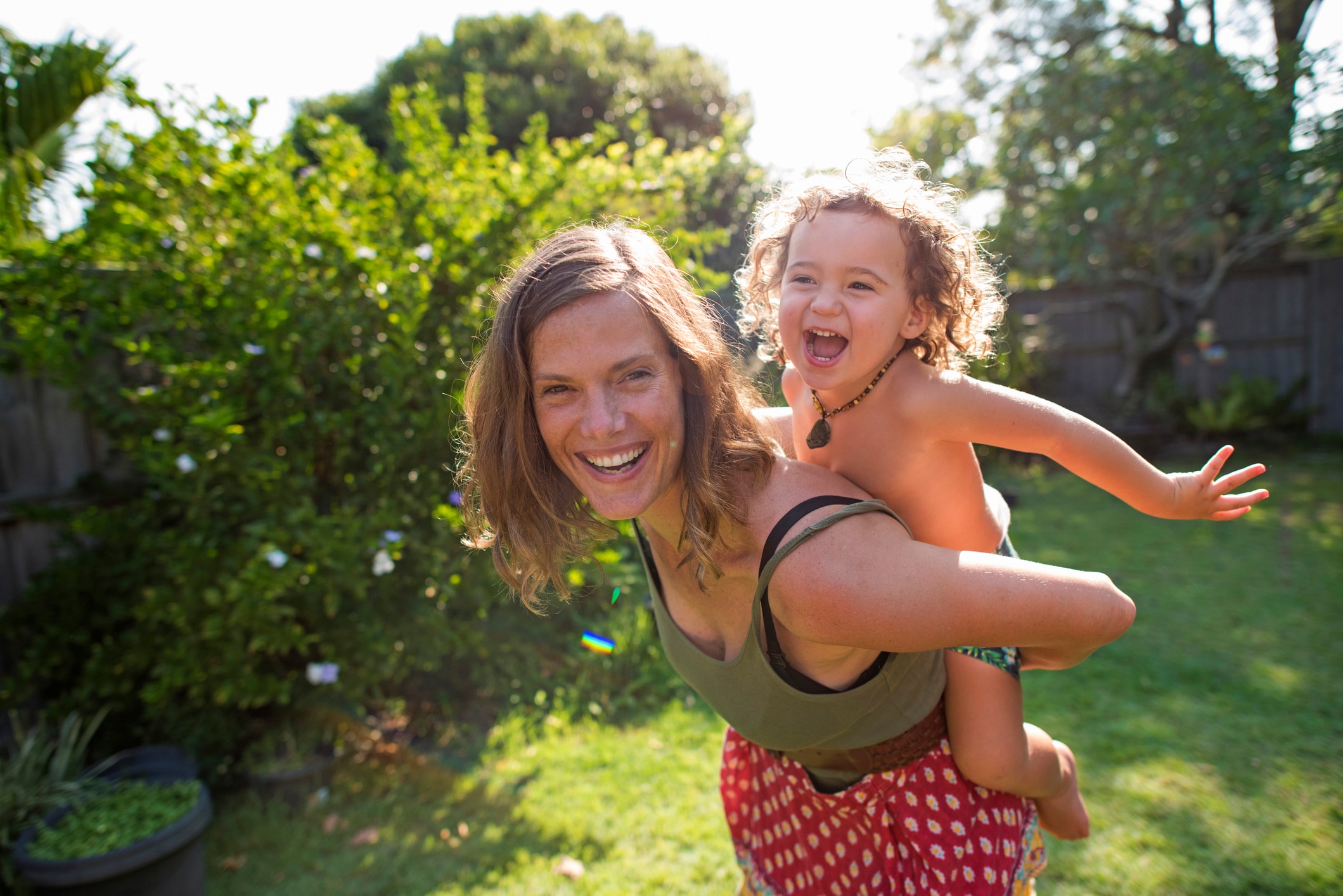In this article
Today’s parents are the first generation of adults to raise children in a fully digital world — while many parents remember the first time they had a chance to surf the web, their own kids have been asking Alexa to play a song since birth. To add to the stress of parenting digital natives, parents receive conflicting advice about screens and technology everywhere they turn.
From knowing the risks associated with social media to setting screen time boundaries with caregivers, the laundry list of tech concerns parents need to stay on top of can feel overwhelming. It doesn’t have to, though. Parents and caregivers can help kids develop digital literacy skills from a young age and set them up for a lifetime of safety online.
“Digital literacy is a lifelong process,” says Cindy Marie Jenkins, creative director of Outthink Media, an organization that gives parents information about popular YouTube channels so they can make informed decisions. Kids are not born with the ability to spot a deepfake, tell the difference between a credible source and a conspiracy theory or avoid internet predators. Those skills are taught over years of parenting. Here’s how parents can focus on the core skills of digital literacy and set kids up for success in the digital age.
Key takeaways
- Digital literacy is the set of skills kids and adults use to navigate the internet. Good digital literacy includes knowing how to find information, stay safe online and manage screen time and personal wellbeing.
- While experts agree young kids should not have unfettered access to the internet, delaying exposure to screens altogether can create a digital literacy gap for some kids. Parents should start teaching digital literacy from toddlerhood on up.
- Digital literacy requires hands-on parenting, just like learning to ride a bike or play an instrument. Parents need to provide instruction, time to practice and guidelines to keep kids safe and set them up for success.
What is digital literacy?
“Digital literacy is the ability to find, evaluate, organize, create and communicate information,” defines Jenkins. She adds that many young children will only focus on the first three skills before learning to create and communicate online as teens, but the early skills lay the foundation for more advanced tasks.
Jenkins spends hours watching and reviewing YouTube videos so that parents don’t have to, and says there is so much good to be found on the internet — but that good is best accessed by kids with strong digital literacy skills. “Ultimately, the internet is a mystery,” she explains. “It’s easy to fall into complacency, which puts users of any age at risk.”
Key components of digital literacy for kids
The five basic skills associated with digital literacy include:
- Finding information.
- Evaluating information.
- Organizing information.
- Creating content.
- Communicating online.
While having these skills won’t completely demystify the internet, they give kids a solid safety net to fall back on — especially as they start to use the internet for both school work and socialization. Take a look at how the experts we spoke to say you can focus on each key component to start developing kids’ digital literacy.
1. Finding information
One of the very first skills kids need to learn is how to find information on the internet. While today’s parents were once skilled at using an encyclopedia to look up facts, their kids use search engines to find out what their favorite animal likes to eat.
When kids are curious about a topic, it is a great time to sit side-by-side and use a search engine to dig deeper into it. Kids may be drawn to videos like “YouTube explainers,” which are not always bad — but it’s a parent’s job to help them understand how to find information from a wide variety of trustworthy sources.
2. Evaluating information
Most adults know that search engine results include a mix of high-quality and low-quality results, but kids are apt to trust whatever pops up first. They have no reason to doubt it. This is where adults can share their own experiences with bad search results or bogus info and offer some guidance. For example:
- Talk to kids about the difference between “.gov” and “.com” websites.
- Show kids how to look for citations in an article as proof of accuracy.
- Point out bad sources in search results and explain why they’re problematic — then quiz kids on the next search.
“Long before your child gets a device of their own… show them how the internet works. Let them explore with boundaries, such as using a laptop in a common area or putting parental monitoring software onto a shared family device.”
3. Organizing information
One of the reasons digital literacy is so overwhelming for kids and parents is that the internet can feel like a firehose of information to the face. Once kids understand how to search for information and verify its accuracy, the next step is learning how to handle all of the information the internet will lob at them daily.
Talk to kids about finding the information they need, sorting out the unreliable information and then taking a step back. Encourage them to:
- Make a list of the information they’ve gathered.
- Evaluate why they think they can trust the source of each piece of information.
- Ask an adult to review their work — and discuss why they made the choices they did.
- Hop back online with a grown-up if more high-quality sources are needed so the adult can provide additional guidance.
In the presence of so much info, kids may need adult guidance to source the info they need without falling down an internet rabbit hole.
4. Creating content
Most kids (and most parents) aren’t YouTube creators or Instagram influencers — but most people who use the internet are creating some type of content. This content looks like comments on social media, photos, personal websites and videos posted for others to see.
Talk to kids about what you share online and how you toggle your audience settings to decide what gets shared publicly or privately (and why). Then, discuss how sharing content makes you feel:
- What types of content feel good and safe to share?
- When you overshare, do you feel icky?
- How do you feel when you get in an online comments battle?
Tweens and teens will begin to navigate some of these situations themselves, but parents should begin talking about what it means to put digital content out into the world long before an adolescent gets their first social media account.
5. Communicating online
Just like with creating content, communicating online is a whole new world for kids. From group texts to Snapchat, direct online communication is a common source of conflict for parents and their kids. Here are some topics to discuss with kids about participating in safe and healthy communication online:
- Talk about how it’s difficult to read tone in a text message. Is your friend really mad at you? Read the text out loud in a few different tones to show kids the many ways it could be interpreted.
- Talk about why we shouldn’t share photos or screenshots of others without their permission. Encourage kids to come to you whenever online communication feels iffy or stressful.
- Talk explicitly about why kids shouldn’t share personal information. This includes sharing passwords or their location with people they encounter online. It may seem intuitive to parents, but kids raised in a digital world often have a hard time seeing the line between real life and online connections.
How to promote digital literacy for kids
Digital literacy skills need to be woven into our everyday family life from a young age, says Devorah Heitner, a media and technology expert and author of “Screenwise” and “Growing Up in Public.” This does not mean kids get unfettered access to screens from birth — it’s more about thoughtful use and skill-building that grows with kids as they mature.
These basic skills lay the groundwork for raising kids who know how to navigate the digital age safely, but it takes more than just a few simple conversations to imprint these skills on our kids. To promote lifelong digital literacy, here’s what the experts we spoke to suggest:
1. Start early and model responsible tech use
While there is plenty of good evidence that there is no benefit to screen use under the age of 2, that doesn’t mean digital literacy education can’t start long before that. “You want to be thinking about modeling good phone boundaries when you’re reading to your kid and at meal times from the beginning,” says Heitner.
Toddlers will often bring their parents their phone because they notice adults place a high value on that phone — so be intentional about choosing to set it aside. Narrate your feelings, too. Tell your toddler that you need to set your phone down for a meal, but it’s hard to resist picking it up. Narrate why you’ve chosen a no-screen rule for mealtimes. Kids are listening.
2. Provide kids with opportunities to learn
While there’s no right age for a first phone or tablet, barring kids completely from the internet can be just as worrisome as giving young kids unfettered access to the internet, the experts caution — think of it like throwing a non-swimmer into the deep end of a pool without a life jacket.
Long before your child gets a device of their own, sit thigh-to-thigh with them and show them how the internet works. Let them explore with boundaries, such as using a laptop in a common area or putting parental monitoring software onto a shared family device. Children, tweens and younger teens should not be given unfettered access to the internet until their digital literacy skills are more developed.
“If your kids want to play Roblox, make an account and learn the ins and outs of the game. Does your child want to learn how to make a video? Download some editing software and do it with them.”
3. Get involved in kids’ digital lives
Every family’s screen rules will be different, but there is one common theme — digital parenting is not hands-off.
If your kids want to play Roblox, make an account and learn the ins and outs of the game. Does your child want to learn how to make a video? Download some editing software and do it with them, even if you never post it anywhere. Talk about why to include (or not include) certain clips in the final product as a way to weave in digital etiquette and safety skills. If your teen is asking about a specific social media app, scroll it with them on your own account before creating their own.
4. Be realistic about the internet
Between social media, violent or sexual content and online safety concerns, it’s no wonder that many parents wish they could keep their kids off the internet forever. Jenkins and Heitner, both parents themselves, understand the fear and worry. They also urge parents to be realistic about today’s digital age. “That doesn’t mean you say yes to your 9-year-old’s request for Snapchat,” says Heitner. “But you also don’t want to tell your 15-year-old they cannot text or make any plans themselves. That’s the equivalent of growing up in a home without a phone when we were kids.”
Parents don’t need to say yes to everything, but they do need to consider the social and safety ramifications of sheltering a child from the internet for too long. If the first time a teen has a chance to interact online is at age 18, they may be more at risk of being exploited than those kids who had the chance to develop digital literacy skills earlier.
A final tip about digital literacy for kids
Ultimately, says Jenkins, adults are preparing kids to go out into a world where we can’t control the internet, so we need to raise them with that in mind.
“It’s up to the whole family to keep the lines of conversation open,” she says. “They won’t have the same — or any — parental controls at their friends’ houses, so ultimately the decisions… are in our children’s own hands. It’s better to give them the mental tools to make better choices than to count on the fact that they’ll never figure out how to work around parental controls.”





